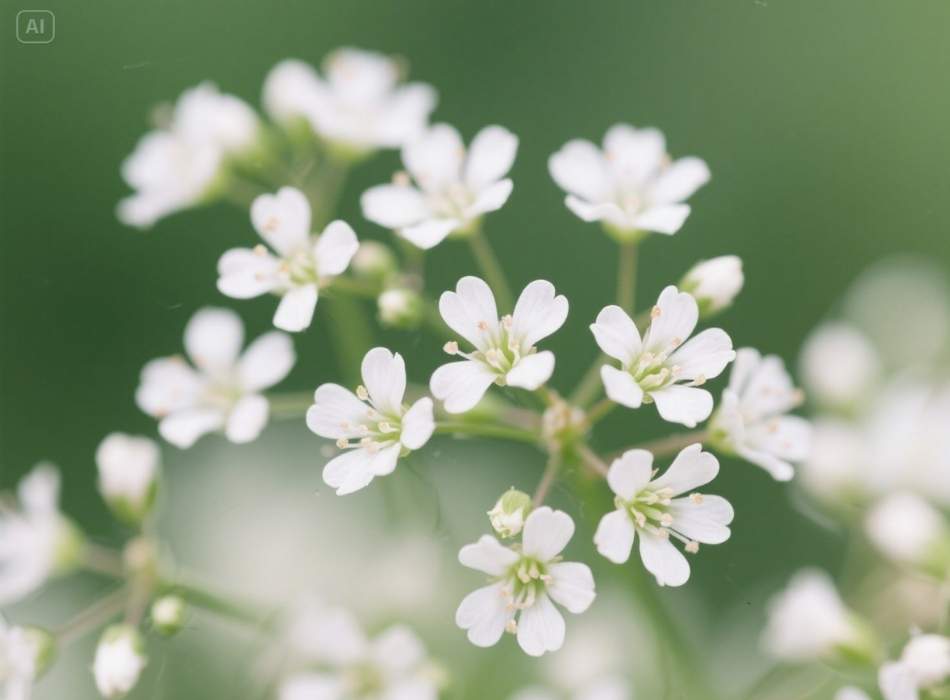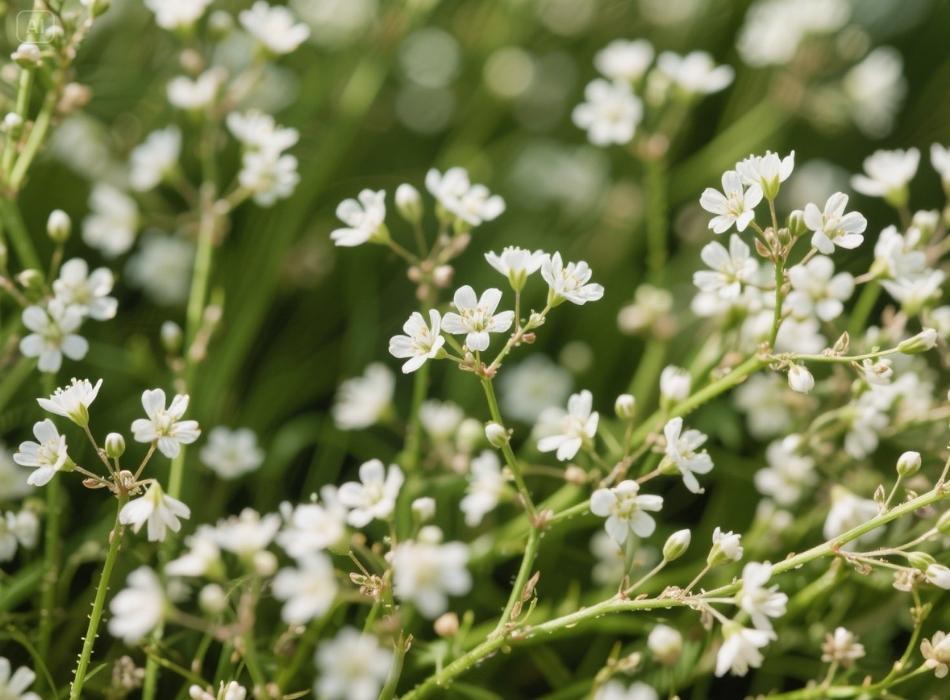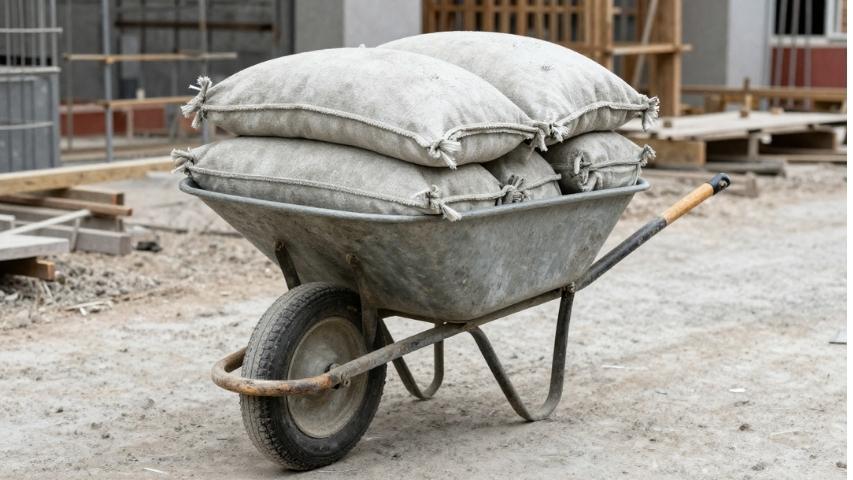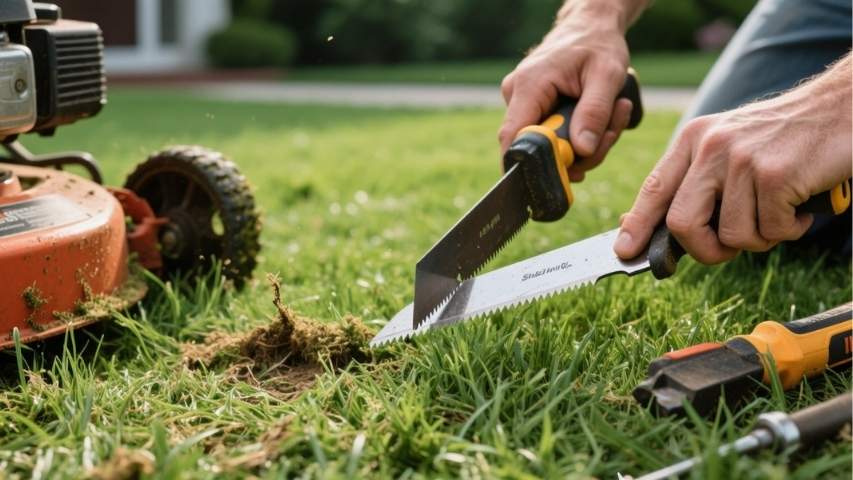Baby’s Breath, also known as Gypsophila, is a classic favourite for florists, flower growers, and gardeners alike. With its delicate clusters of tiny white or pink blossoms, it adds an ethereal touch to bouquets, gardens, and floral arrangements. Despite its dainty appearance, Baby’s Breath is a hardy and relatively low-maintenance plant. That said, providing the right balance of nutrients and water is essential for healthy growth and abundant blooms.
Whether you’re cultivating a baby’s Breath in your garden, growing it on a large scale as a flower grower, or want the best blooms for your floral arrangements, this guide will help you master its nutrient and water needs.
Why Understanding Care Matters for Baby’s Breath
Baby’s Breath symbolizes purity and innocence, which is why it has become such an iconic addition to wedding bouquets and centrepieces. But to achieve those lush, airy sprays that florists love, florists and gardeners must understand their water and soil needs. Neglecting these aspects can lead to weak, sparse growth or even detrimental root issues such as rot.
Properly nurturing a baby’s Breath will result in sturdy stems, vibrant blooms, and plants that thrive in their environment.
Nutritional Needs for Healthy Baby’s Breath
Baby’s Breath isn’t a particularly demanding plant, but providing the proper nutrients is key to healthy growth. Here’s everything you need to know about keeping your Gypsophila well-fed.

- Choose the Right Soil for Optimal Nutrition
Baby’s Breath thrives in well-drained alkaline soil with a pH level between 6.5 and 7.5. Since the plant prefers soil that mimics its natural habitat of limestone-rich terrain, ensuring alkaline conditions is crucial.
To achieve the right acidity level:
Test your soil’s pH with a testing kit. Adding lime can help raise the pH level and make conditions more suitable. Avoid heavy clay soils, as they retain water and can suffocate the roots.
2. Fertilization Tips for Baby’s Breath
In general, a baby’s Breath doesn’t demand much fertilizer. It is a light feeder and can thrive without heavy chemical enrichments. However, if your soil is lacking in essential nutrients, a bit of assistance can go a long way:
Type of Fertilizer: Use a balanced, slow-release fertilizer (e.g., 10-10-10) applied sparingly. When to Fertilize: Apply fertilizer at the start of the growing season (early spring) and again in mid-summer if needed. Organic Options: For a natural alternative, consider compost or aged manure, which can provide nutrients without overwhelming the plant.
Avoid over-fertilizing as it can cause excessive foliage at the expense of flowers.
- Key Nutrients to Keep in Mind
Baby’s Breath primarily benefits from nitrogen, phosphorus, and potassium. Here’s why each is important:
Nitrogen helps with healthy leaf and stem growth. Phosphorus encourages strong root systems and promotes flowering. Potassium boosts the plant’s resistance to stress factors like drought.
Other nutrients that may be important for a baby’s Breath include calcium, magnesium, iron, and sulfur. These can often be found in balanced fertilizers or through organic sources such as compost or manure.
It is important to note that different types of soil may require different levels of nutrients. Conduct a soil test to determine the pH level and nutrient deficiencies present in your soil. This will help you choose the right fertilizer for your baby’s breath plants.

- Fertilizing Techniques for Baby’s Breath
Now that we know which nutrients are essential for a baby’s Breath let’s discuss some techniques for applying fertilizer:
Topdressing: Sprinkle a layer of balanced fertilizer on top of the soil around the base of the plant, avoiding contact with the foliage. This method is best for established plants and should be done in early spring before new growth appears. Liquid Fertilizer: Mix a water-soluble fertilizer according to package instructions and water your baby’s breath plants with it. This method is ideal for young or newly transplanted plants as it provides quick absorption of nutrients. Slow Release Fertilizer: These types of fertilizers are added to the soil at planting time and release small amounts of nutrients over an extended period. They are a convenient option for those who don’t want to fertilize their plants continuously. While fertilizers can greatly benefit your baby’s breath plants, it’s important not to over-fertilize. Too much fertilizer can result in burning or damage to the plants. Follow package instructions and only fertilize as needed.
Watering Needs for Baby’s Breath
The way you water a baby’s Breath can make all the difference between vibrant, dense clusters of flowers and a struggling plant. While it is relatively drought-tolerant in its mature stages, proper watering is crucial during germination and early growth periods.

- Establishing a Watering Routine
Baby’s Breath thrives on a “less is more” approach when it comes to watering. Here’s how to get it right:
During Germination: Keep the soil consistently moist but not soggy. This ensures seeds germinate successfully. After Establishment: Once the plants are established, they prefer drier conditions. Watering once per week is typically sufficient. Monitor Weather Conditions: Cut back on watering during rainy periods to prevent overwatering.
2. Avoid Overwatering
One of the main issues that baby’s breath growers face is overwatering. Too much water can:
Cause root rot or fungal diseases. This leads to yellowing leaves and weak growth. Prevent oxygen from reaching the roots.
Always check that the top inch of soil is dry before watering again. Good drainage is critical! If the baby’s Breath is growing in containers, make sure the pots have adequate drainage holes to allow for proper water flow.

- Adapt for Seasonal Conditions
Baby’s Breath is naturally drought-resistant, making it an excellent choice for sunny gardens and warmer climates. However, during prolonged dry spells or intense heat, you may need to provide additional watering to keep the blooms healthy. Just be mindful not to saturate the soil. In cooler climates, baby’s Breath can also withstand a light frost and continue to bloom. However, if temperatures drop below freezing, it’s best to cover the plants with a thick layer of mulch or bring potted plants indoors to protect them from extreme cold.
To maintain healthy growth during the growing season, fertilize the baby’s Breath every 2-3 weeks with a balanced fertilizer. This will provide the necessary nutrients for strong root development and abundant blooms in colder climates where a baby’s Breath may go dormant during winter. Refrain from fertilizing until new growth appears in spring.
When selecting a location for your baby’s breath plant, consider seasonal conditions and choose an area that will provide adequate sunlight and well-draining soil. Baby’s Breath prefers full sun but can tolerate some shade. In terms of soil, it thrives in well-drained, sandy, or loamy soil with a pH level between 6.0 and 7.5.
Watering is crucial for the growth and health of baby’s breath plants. While they are drought tolerant once established, they require consistent moisture during their first growing season to establish strong roots. Water deeply once a week during dry periods, avoiding getting water on the leaves to prevent fungal diseases.

The Role of Mulch and Drainage
Mulching can help maintain consistent soil moisture without risking waterlogging. Adding a layer of organic mulch, such as straw or wood chips, around the base of the plants helps:
Protect against water evaporation. Keep the roots cool in hot weather. Improve overall soil health as the mulch breaks down.
Ensure the mulch doesn’t directly touch the stems to avoid potential fungal growth or pest infestations.
Practical Tips for Baby’s Breath Cultivators
Check for Signs of Stress: Wilting, yellowing leaves, or sparse blooms can indicate water or nutrient deficiencies. If these appear, adjust your care routine accordingly. Prune After Blooming: Deadhead spent flowers to encourage a longer blooming period and redirect the plant’s energy toward producing more flowers. Rotate Crops (Flower Growers): Regularly rotating where you grow your baby’s Breath will help avoid soil nutrient depletion. This is especially important for flower growers who rely on healthy plants to sell.
Provide Support for Tall Varieties: Some varieties of baby Breaths can grow quite tall and may need support to prevent them from falling over. Use bamboo stakes or other plant supports to keep your plants upright. Use Mulch: Adding a layer of mulch around the base of your baby’s breath plants can help retain moisture in the soil, suppress weeds, and regulate soil temperature. Organic mulches like straw, bark, or shredded leaves are recommended. Monitor Pests and Diseases: Keep an eye out for common pests like aphids, spider mites, and thrips, which can damage the leaves and flowers of your baby’s breath plants. You may also encounter diseases like root rot or powdery mildew. Regularly inspecting your plants and promptly addressing any pest or disease issues can help keep your baby’s Breath healthy. Harvesting: Baby’s breath flowers are typically ready for harvest in early summer when the blooms are fully open but before they start to drop their petals. Cut the stems just above the soil level, making sure to leave a few inches of stem attached so the plant can continue growing. Harvested flowers can be used fresh in bouquets or dried for use in arrangements. Propagation: Baby’s breath plants can be propagated through both seeds and cuttings. To propagate through seeds, plant them in well-drained soil and keep them moist until they germinate. Cuttings can be taken from the parent plant by snipping off a 3-4 inch stem just below a leaf node. Remove the lower leaves and dip the cut end into the rooting hormone before planting in moist soil. Pests and diseases: Baby’s breath plants are generally resistant to pests and diseases, making them low maintenance for gardeners. However, aphids and spider mites can sometimes infest these plants. Keeping the area clean of debris and providing good air circulation can help prevent pest infestations. In case of an infestation, use insecticidal soap. Why Proper Care Matters for Floral Work
For florists and flower growers, high-quality Baby’s Breath can elevate bouquets and arrangements. Healthy, lush stems create a fuller, more impactful visual while also lasting longer in vases. Proper care in the growing stages ensures you deliver premium quality every time, whether you’re creating wedding bouquets or retailing floral supplies.
Nurture Your Baby’s Breath to Full Bloom
Baby’s Breath may look delicate, but with the right balance of nutrients and water, it’s a surprisingly resilient and rewarding plant to grow. For florists, flower growers, and gardeners, success lies in understanding their needs—from maintaining the ideal alkaline soil to perfecting a light yet consistent watering routine.
By investing in proper care techniques, you’ll enjoy stunning sprays of blooms in your garden and stand out with top-tier floral products that your customers will adore.
Start nurturing your lush Gypsophila today, and see the difference proper care makes in your arrangements and gardens!











